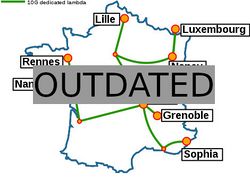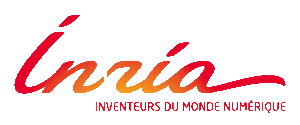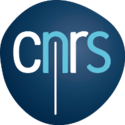Grid5000:Home: Difference between revisions
No edit summary |
No edit summary |
||
| Line 7: | Line 7: | ||
Key features: | Key features: | ||
* provides '''access to a large amount of resources''': | * provides '''access to a large amount of resources''': 12000 cores, 800 compute-nodes grouped in homogeneous clusters, and featuring various technologies: GPU, SSD, NVMe, 10G Ethernet, Infiniband, Omnipath | ||
* '''highly reconfigurable and controllable''': researchers can experiment with a fully customized software stack thanks to bare-metal deployment features, and can isolate their experiment at the networking layer | * '''highly reconfigurable and controllable''': researchers can experiment with a fully customized software stack thanks to bare-metal deployment features, and can isolate their experiment at the networking layer | ||
* '''advanced monitoring and measurement features for traces collection of networking and power consumption''', providing a deep understanding of experiments | * '''advanced monitoring and measurement features for traces collection of networking and power consumption''', providing a deep understanding of experiments | ||
Revision as of 09:23, 18 September 2018
|
Grid'5000 is a large-scale and versatile testbed for experiment-driven research in all areas of computer science, with a focus on parallel and distributed computing including Cloud, HPC and Big Data. Key features:
Older documents:
|
Random pick of publications
Five random publications that benefited from Grid'5000 (at least 2517 overall):
- Hubert Nourtel, Pierre Champion, Denis Jouvet, Anthony Larcher, Marie Tahon. Analyse de l'anonymisation du locuteur sur de la parole émotionnelle. JEP 2022 - Journées d'Études sur la Parole, Jun 2022, Île de Noirmoutier, France. hal-03636737 view on HAL pdf
- Dinh Ngoc Tu, Boris Teabe, Daniel Hagimont, Georges da Costa. Optimized Resource Allocation on Virtualized Non-Uniform I/O Architectures. 22nd International Symposium on Cluster, Cloud and Internet Computing (CCGrid 2022), May 2022, Taormina, Italy. pp.432-441, 10.1109/CCGrid54584.2022.00053. hal-03738261 view on HAL pdf
- Danilo Carastan dos Santos, Thi Hoang Thi Pham. Understanding the Energy Consumption of HPC Scale Artificial Intelligence. CARLA 2022 - Latin America High Performance Computing Conference, Sep 2022, Porto Alegre, Brazil. pp.1-14. hal-03845090 view on HAL pdf
- Gustavo A Salazar-Gomez. Transformer-based Lidar-RGB Fusion for Semantic Grid Prediction in Autonomous Vehicles. Computer Vision and Pattern Recognition cs.CV. 2022. hal-03943226 view on HAL pdf
- Mateusz Gienieczko Envelope, Filip Murlak Envelope, Charles Paperman Envelope. Supporting Descendants in SIMD-Accelerated JSONPath. International Conference on Architectural Support for Programming Languages and Operating Systems (ASPLOS 2024), 2024, San Diego (California), United States. 10.4230/LIPIcs. hal-04398350 view on HAL pdf
Latest news
Failed to load RSS feed from https://www.grid5000.fr/mediawiki/index.php?title=News&action=feed&feed=atom: Error parsing XML for RSS
Grid'5000 sites
Current funding
As from June 2008, Inria is the main contributor to Grid'5000 funding.
INRIA |
CNRS |
UniversitiesUniversité Grenoble Alpes, Grenoble INP |
Regional councilsAquitaine |


